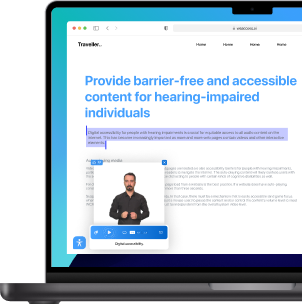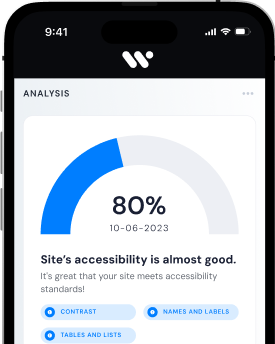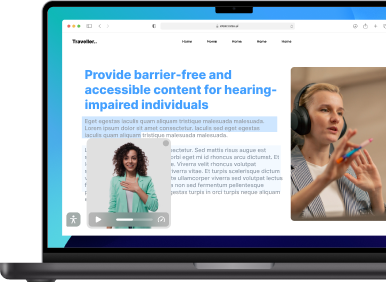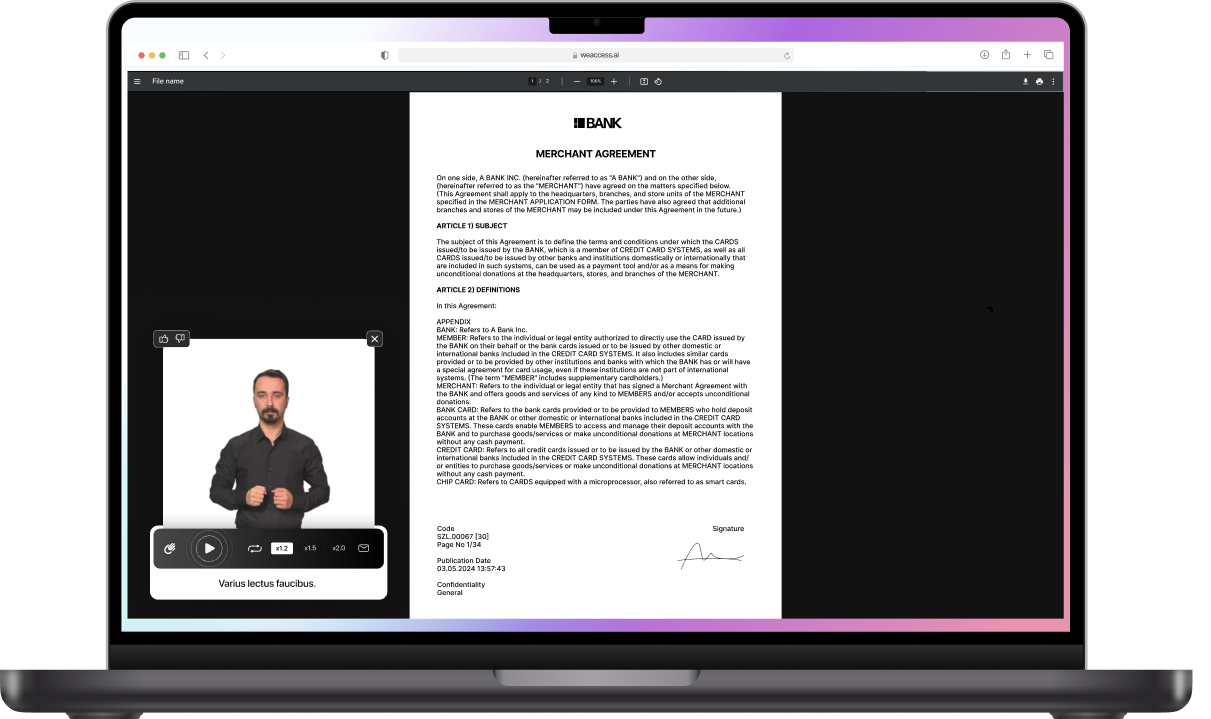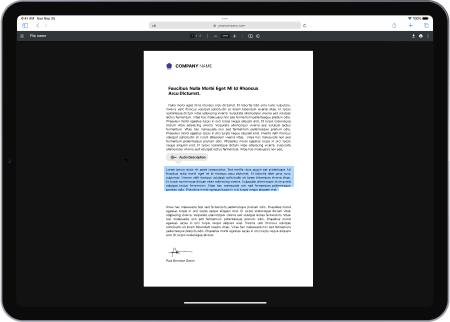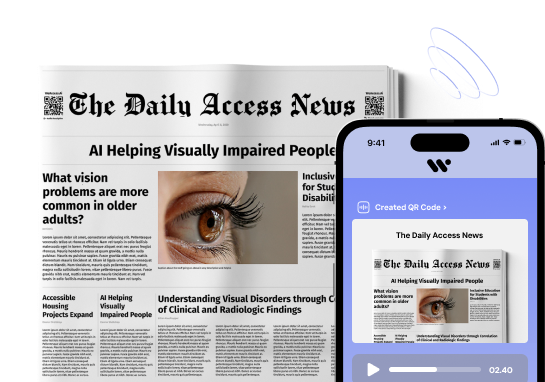Understanding ADA Compliance
Ensuring compliance with the American with Disabilities Act (ADA) is crucial for all entities open to the public, including websites and physical structures. ADA compliance refers to adhering to the regulations and standards set forth by the ADA to ensure equal access and opportunities for people with disabilities. These standards apply to a wide range of aspects, from accessible design features to parking spaces, and failure to comply can have legal implications.
What is ADA Compliance and Why is it Important?
ADA compliance refers to ensuring that buildings, facilities, and websites are ADA accessible, meaning they adhere to the Americans with Disabilities Act (ADA) standards for design and accessibility. It is important because it ensures the rights of people with disabilities to access public accommodations and commercial public accommodations in all areas of public life.
Being ADA compliant means that a building or facility must be accessible for individuals with disabilities, including having handicap accessible features such as accessible parking spaces and secure websites. ADA compliance standards apply to all levels of ADA compliance and are outlined in the 2010 ADA Standards and the ADA Standards for Accessible Design.
Ensuring that a website is ADA compliant means that it meets the standards set forth by Title II and Title III of the Americans with Disabilities Act and the Rehabilitation Act of 1973. ADA-friendly websites provide compliance services to make sure all users, including those with disabilities, can access and navigate the site easily.
Therefore, keeping a website ADA compliant is not only a legal obligation, but also a way to be inclusive and ADA-friendly to all individuals, regardless of their abilities. It ensures that everyone has equal access to information and services provided on the website, creating a more accessible and inclusive online space.
Defining ADA Compliance
ADA compliance involves meeting the requirements and standards outlined in the Americans with Disabilities Act. It means making sure that individuals with disabilities can access and use a website or facility as easily as those without disabilities.
Importance of ADA Compliance for People with Disabilities
ADA compliance is vital for ensuring that people with disabilities are not excluded from essential services or experiences. It promotes inclusivity and equal opportunities for all individuals, regardless of their physical or cognitive abilities.
Legal Implications of Non-Compliance
Failing to comply with ADA regulations can result in legal consequences, including lawsuits and financial penalties. Non-compliance not only risks harming individuals with disabilities but also tarnishes the reputation and credibility of businesses and organizations.
How to Ensure Your Website is ADA Compliant
ADA compliance is essential for websites to ensure ADA friendly experience for all users. This ADA compliance meaning ensures ADA-compliant websites are accessible to individuals with disabilities, in line with the Americans with Disabilities Act handbook. This ADA compliant definition prohibits discrimination against people with disabilities on gov websites.
To make your website ADA compliant, follow the ADA standards outlined in title III of the ADA. Ensure all content is ADA accessible by including audio description and addressing accessibility issues. Even if your website isn't covered under 504 of the Rehabilitation Act, strive to meet ADA compliance to provide an inclusive experience.
Understanding ADA Standards for Websites
Website owners must familiarize themselves with the ADA standards for websites, which include guidelines for accessibility features such as text alternatives for non-text content, keyboard navigability, and compatibility with screen readers.
Implementing Accessibility Guidelines
To make your website ADA compliant, it's essential to implement accessibility guidelines such as the Web Content Accessibility Guidelines (WCAG). These guidelines provide specific criteria for making web content more accessible to people with disabilities.
Tools and Resources for Website ADA Compliance
There are various tools and resources available to assist website owners in achieving ADA compliance, including accessibility plugins, testing tools, and design resources that cater to specific accessibility needs.
Key Features of an ADA Compliant Website
ADA compliance for websites means that the site meets the standards set forth by the Americans with Disabilities Act (ADA). An ADA compliant website is one that is ADA accessible and ADA friendly, allowing individuals with disabilities to be able to navigate and access the content easily. Compliance requires meeting the act standards for accessible design, including following the ADA standards that apply to the world wide web and 508 of the rehabilitation act.
Even if ADA standards do not specify requirements for websites, ADA compliance is still important. The Americans with Disabilities Act (ADA) applies to websites for ADA compliance, just as it does to existing buildings and facilities that have been revised to meet ADA requirements. Lack of accessibility can result in ADA violations and fines, making it necessary for websites to strive for ADA compliance.
Accessible Design Standards
An ADA compliant website should adhere to accessible design standards that prioritize ease of use for individuals with disabilities. This includes features such as alt text for images, clear navigation pathways, and color-contrasted text for readability.
Making Your Website Operable for All Users
Operability is a key aspect of ADA compliance, ensuring that all users, regardless of their abilities, can navigate and interact with the website effectively. This involves creating a user-friendly interface that accommodates various assistive technologies.
Meeting WCAG (Web Content Accessibility Guidelines)
Compliance with the WCAG standards is essential for meeting ADA requirements for website accessibility. By following the WCAG guidelines, website owners can ensure that their content is perceivable, operable, understandable, and robust for all users.
Steps to Becoming ADA Compliant
ADA compliance is a critical aspect for businesses and websites to be ADA friendly and accessible to those with disabilities. Steps to becoming ADA compliant include understanding the ADA compliance definition and ensuring that your website meets the ADA standards apply. Title II of the Americans with Disabilities Act (ADA) and Section 504 standards for accessible buildings are essential to follow.
For a website to be ADA compliant, it must be ADA accessible and follow the ADA standards for websites. The Americans with Disabilities Act (ADA) is a civil rights law that ensures accessibility compliance is required for a building to be accessible to those with disabilities.
Updating Existing Websites and Facilities
For existing websites and physical structures, updating to meet ADA standards is a critical step in achieving compliance. This may involve retrofitting facilities, adding accessible features, and revising digital content to align with accessibility guidelines.
Creating ADA Compliant Parking Spaces
Ensuring that parking spaces are ADA compliant is essential for providing accessible transportation options for individuals with disabilities. This includes designated accessible parking spots with appropriate signage and access ramps.
Consulting ADA.gov for Regulations
For comprehensive guidance on ADA regulations and compliance requirements, referring to ADA.gov is recommended. The website offers detailed information on ADA standards, accessibility resources, and updates on legal requirements.
ADA Compliance for Buildings and Structures
ADA compliance is crucial for ensuring that buildings and structures are ADA friendly, meaning they meet the standards set forth by the Americans with Disabilities Act (ADA). It is important to understand what ADA compliance means, as it ensures that people with disabilities in many different aspects of life, including accessing buildings and structures. This includes ADA compliant websites, which must follow the ADA standards for accessible web content. Title II of the ADA outlines the requirements for federal accessibility and comprehensive accessibility laws, while Section 508 standards provide a guide for making web content accessible to people with hearing disabilities. Staying up to date with the latest version of the ADA standards ensures that buildings, structures, and websites are ADA compliant and accessible to all individuals.
Requirements for Existing Buildings
Existing buildings must meet ADA requirements to ensure accessibility for all individuals. This includes implementing features such as ramps, handrails, accessible entrances, and designated pathways that comply with ADA accessibility standards.
Ramp and Accessibility Guidelines
Ramps play a vital role in making buildings and facilities accessible to people with mobility impairments. ADA guidelines specify the slope, width, and handrail requirements for ramps to ensure safe and convenient access for everyone.
Making Facilities Accessible to People with Disabilities
Creating a fully accessible environment involves considering the diverse needs of individuals with disabilities. This includes providing features such as tactile signage, Braille labels, accessible restrooms, and visual indicators for optimal navigation and usability.
you may be interested in : wcag compliance


